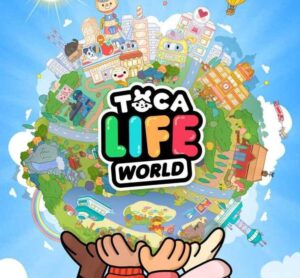The War on Two Fronts: Palworld Faces Ultimate Test with 1.0 Launch in 2026
Popular Now
 Candy Crush Saga
Candy Crush Saga
 EA SPORT FC 25
EA SPORT FC 25
 FIFA 23
FIFA 23
 PUBG Mobile
PUBG Mobile
 Free Fire
Free Fire
 NBA 2K24
NBA 2K24
 The Legend of Zelda
The Legend of Zelda
 Auto X Drift Racing 3
Auto X Drift Racing 3
 Among Us
Among Us
 Valorant
Valorant 
The year 2026 is shaping up to be the most critical period for Pocketpair’s breakout phenomenon, Palworld. Following an unprecedented Early Access run, the game’s official 1.0 launch is scheduled to drop amidst a complex and rapidly evolving landscape. The title that once dominated headlines for its explosive popularity now finds itself in a precarious strategic position, fighting a decisive war on two major fronts: a high-stakes legal battle with industry giants and the emerging threat of a new wave of next-generation monster-taming games.
The development studio, Pocketpair, has confirmed that the full version of Palworld is slated for release in 2026, promising a “truly massive amount of content” to polish the experience and justify its eventual exit from Early Access. However, this ambitious schedule must run concurrently with mitigating both the existential risks posed by ongoing litigation and the imminent market saturation from aggressive competitors. This scenario presents a major test of the game’s long-term viability and Pocketpair’s ability to navigate an intensely competitive gaming ecosystem.
 Front One: The Lingering Shadow of Litigation and IP Concerns
Front One: The Lingering Shadow of Litigation and IP Concerns
The first and most immediate threat to Palworld’s future remains the ongoing legal dispute with Nintendo and The Pokémon Company. Despite Palworld’s massive commercial success—which saw it reach over 32 million players across all platforms by early 2025—the legal challenge has not dissipated. Sources indicate that the lawsuit, which escalated in late 2024, centers on claims of patent infringement rather than direct copyright violation, specifically targeting game mechanics developed and patented by Nintendo shortly after Palworld’s initial release.
- The Core of the Dispute: The patent claims reportedly focus on specific mechanics, such as the system for using capture items and the aiming system for deploying them, which Pocketpair has already been forced to adjust in Early Access updates (e.g., modifying the Pal Sphere mechanics). The introduction of a farming-focused spin-off, Palworld: Palfarm, following the reveal of a similar Pokémon title, further highlights the Intellectual Property (IP) tension in the genre.
- Impact on Development: While Pocketpair has vowed to fight the claims, the need to redesign core gameplay mechanics to avoid infringement presents a continuous strain on development resources. This is particularly challenging as the studio focuses on cleaning up the existing “quirks and jank” and creating new content for the 1.0 release. The legal cloud also affects investor confidence and international distribution plans, particularly in territories where IP protection is highly stringent.
- Financial and Strategic Risk: A protracted or unsuccessful legal outcome could force significant redesigns or, in the most extreme scenario, hinder the game’s availability, directly affecting its revenue streams and return on investment (ROI). This forces the studio to constantly innovate while operating under severe legal constraints—a high-wire act for any major game release.
Front Two: The Rising Tide of Next-Generation Competitors
Palworld’s breakthrough success in 2024 demonstrated a clear and massive demand for an open-world, survival-crafting, creature-taming hybrid. This commercial validation has inevitably attracted a new wave of sophisticated competitors, all aiming to capture the niche market that Palworld essentially carved out. The year 2026 is poised to see the launch of several highly-anticipated titles that threaten to erode Palworld’s market share and player base.
 The core challenge here is retaining the player base, which, despite impressive lifetime numbers, has shown the natural decline in concurrent players typical of a long Early Access survival game. While the average concurrent player count on Steam remains respectable, the need to inject fresh, high-quality content is critical. The competitors launching in 2026 are not simply clones; they are building upon the genre, leveraging next-gen technology, and learning from Palworld’s successes and failures.
The core challenge here is retaining the player base, which, despite impressive lifetime numbers, has shown the natural decline in concurrent players typical of a long Early Access survival game. While the average concurrent player count on Steam remains respectable, the need to inject fresh, high-quality content is critical. The competitors launching in 2026 are not simply clones; they are building upon the genre, leveraging next-gen technology, and learning from Palworld’s successes and failures.
Key Emerging Threats:
- Aniimo: This next-gen, open-world action RPG promises a unique “Twining” mechanic where players merge with their creatures for a new form of combat. Positioned as a direct, free-to-play competitor on PC and Xbox, its 2026 launch is a direct challenge to Palworld’s established presence on those platforms. The focus on a highly interactive world and real-time PvP/PvE combat aims directly at Palworld’s core demographic.
- High-Profile Indie Titles: Games like Wildbound and others are pushing the boundaries of the creature-collection genre, focusing on richer lore, more complex battle systems (like Cassette Beasts’ chemistry mechanics), and addressing Palworld’s current criticism regarding “janky” systems, particularly Pal Pathing and the lack of polish in world design.
- Platform Exclusivity & Marketing: Some rivals are utilizing strategic console exclusivity deals (e.g., Aniimo on Xbox) or strong launch platform integrations to build a dedicated user base, creating a highly fractured and competitive gaming subscription service landscape.
The Path to 1.0: A Critical Focus on Quality and Content
To win this two-front war, Pocketpair is employing a clear, albeit risky, strategy: prioritizing quality over immediate content drops. The planned 1.0 release in 2026 is contingent on a year of dedicated “cleanup” in 2025, addressing core technical debt—bugs, performance issues, base-building jank, and AI optimization—that plagued its initial Early Access period.
 The Ultimate Value Proposition: Palworld’s long-term success hinges on its ability to offer a truly unique and polished convergence of its core pillars: survival crafting, creature collection, and third-person shooter mechanics. The “massive amount of content” promised for 1.0 must not only introduce new areas and Pals but also fundamentally enhance the existing gameplay loop to warrant a full price tag and draw back players who may have left after the initial surge. Critical components of the 1.0 update include:
The Ultimate Value Proposition: Palworld’s long-term success hinges on its ability to offer a truly unique and polished convergence of its core pillars: survival crafting, creature collection, and third-person shooter mechanics. The “massive amount of content” promised for 1.0 must not only introduce new areas and Pals but also fundamentally enhance the existing gameplay loop to warrant a full price tag and draw back players who may have left after the initial surge. Critical components of the 1.0 update include:
- Performance & Stability: A high-fidelity, polished, and bug-free experience is essential for positive launch reviews and sustaining long-term player numbers.
- Deepened Endgame & Monetization: Robust endgame content, such as new Guild Raids and enhanced PvP modes, will be necessary to drive engagement. The future monetization strategy—whether through a battle pass, cosmetics, or expansion DLC—must be carefully balanced to avoid alienating the community.
- Story and World Polish: Improving the narrative context, NPC interactions, and overall world design is vital to differentiate the title from its more narrative-driven competitors in the open-world RPG space.
Palworld’s journey in 2026 will be a compelling case study in modern video game development. By facing down both major legal adversity and a sharpening field of competition, Pocketpair’s ability to deliver a transformative 1.0 release will ultimately determine whether Palworld becomes a sustainable AAA-level franchise or a celebrated but short-lived cultural phenomenon.







 Front One: The Lingering Shadow of Litigation and IP Concerns
Front One: The Lingering Shadow of Litigation and IP Concerns